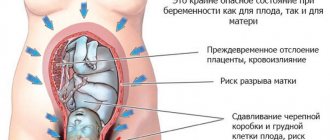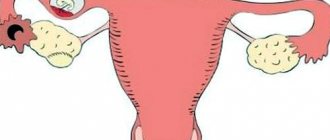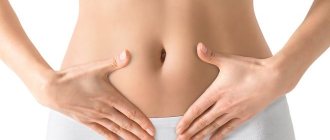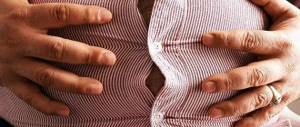Impaired liver function can lead to symptoms such as lower abdominal pain and nausea. Painful symptoms in the abdominal cavity and nausea indicate difficulties in the liver. Usually, deviations from the normal functioning of this organ are characterized by colic in the right hypochondrium, and sometimes in other areas of the abdomen. Intoxication of the body often leads to severe nausea and abdominal pain, pain in the lower abdomen, left or right abdomen. Harmful and toxic substances that enter the human body as a result of food poisoning cause a serious blow to the entire digestive system. In case of intoxication, nausea appears along with pain, vomiting and fever are possible, and sometimes diarrhea. A stomach ulcer is also one of the common reasons why the stomach hurts and a feeling of nausea appears. An ulcerative condition of the stomach manifests itself through pain and lightheadedness, which are accompanied by belching, heartburn, diarrhea or difficulty defecating. The pain is most often aching, and in some cases can become acute.
Kidney diseases. A common cause of patient complaints about nausea and stomach pain is directly related to kidney pathologies. It is not always possible to identify kidney problems on your own if you have the listed symptoms; you need to consult a specialist and undergo an examination. Since pain in the abdomen (closer to the back) is not always clearly manifested with such an illness. The most common complaint among patients is abdominal pain on the sides. In addition to feeling pain in the abdominal cavity, a harbinger of kidney problems is fever, a person may feel chills and have problems with urination.
Hernia. Signs of a progressive hernia, in addition to complaints of abdominal pain, are constipation, bloating, nausea and vomiting. Pay attention to all the symptoms, because if the entire stomach hurts, which often happens with a strangulated hernia, and tell your doctor about them, as this directly affects the definition of the disease and its further treatment.
Appendicitis or inflammation of the appendix, in most cases, is accompanied by abdominal pain (both aching and dull) and nausea, fluctuations in body temperature, and vomiting often occurs. With an exacerbation, pain in the right upper or lower abdomen is more obvious. An attack of appendicitis is a very serious condition. At the first symptoms, you must go to the hospital, since assistance provided at the wrong time can result in death.
Common reasons
Discomfort is caused by infectious diseases, intoxication, and injuries. Sometimes accompanied by fever and vomiting. You should immediately seek medical help.
Intoxication
Occurs when consuming low-quality food products that have expired or were prepared in unsanitary conditions. Along with food, harmful bacteria enter the body, causing poisoning.
Problems in the gastrointestinal tract
Gastroenterological abnormalities are the main cause of a sore stomach. Observed: nausea, heartburn, rumbling, seething. There are chronic, inflammatory infectious, oncological:
- Pancreatitis.
- Gastritis.
- Stomach and duodenal ulcers.
- Damage to the gallbladder and biliary tract.
- Pathologies of the liver, kidneys, spleen.
- Oncology.
It is important to diagnose correctly, start treatment on time, avoiding complications. Due to the similarity of manifestations, it is difficult to determine the focus. It happens that a person suffering from cancer is treated for a long time for gastritis, ulcers, and oncology is discovered late. The third and fourth stages of cancer are incurable. Neglected diseases develop into chronic ones, causing suffering.
Appendicitis
Inflammation of the appendix can easily be confused with indigestion or poisoning. Distinctive features:
- Pain begins in the navel area and gradually moves down to the right.
- Hard belly, bloating.
- Sharp in the lower right part of the peritoneum with light pressure.
- Chills, fever (38 degrees and above), profuse sweating.
- Symptoms of indigestion: diarrhea, constipation, nausea, vomiting.
- In the back area, like renal colic.
With a thorough examination, the doctor may not immediately determine the inflammation. Additional studies are required: blood tests, urine tests, pelvic ultrasound, probing.
In pregnant women, appendicitis is located higher than usual. As the fetus enlarges, organs other than the bladder move upward, changes in blood circulation occur, and frequent constipation occurs.
In a child, inflammation of the appendix does not always manifest itself as in an adult. The baby cannot correctly describe the symptoms or clearly say where it hurts. If a child complains of feeling sick or refuses to eat, you should call a doctor.
Myocardial infarction
In an adult, stomach pain and vomiting are caused by the histological form of myocardial infarction. It is confused with appendicitis, exacerbation of ulcers, gastritis, cholecystitis. If it radiates in the area of the heart, the left shoulder is a serious reason to undergo an urgent examination.
Due to the similarity of symptoms, it is difficult for an experienced specialist to identify heart damage the first time. You can distinguish by paying attention to human behavior. A patient with a heart attack tries to take a sitting position. During exacerbation of gastrointestinal diseases, appendicitis, he often lies down and tries not to make sudden movements.
Food intolerance
With food intolerance, the body refuses to digest a certain product, causing:
- Increased gas formation.
- Diarrhea.
- Bloating, heaviness.
- Weakness.
People do not realize that they suffer from food intolerance, confuse it with an allergy, and refer to unhealthy eating behavior. The most common intolerances are lactose and gluten. To determine the disease, blood tests and tests for antigens of products are carried out, identifying potentially dangerous ones. It is recommended to exclude prohibited foods from the diet for up to six months. After prolonged abstinence, the disease goes away on its own, unlike allergies.
Intestinal parasites
Appear for various reasons:
- Poor hand hygiene.
- Poor quality products, water.
- Fruits and vegetables that are poorly washed after contact with the soil.
- Insufficiently cooked meat and fish.
Parasites can live in the body without appearing for a long time. The manifestation resembles the classic signs of gastrointestinal pathologies: loose stools, vomiting, bloating, gas formation. Characterized by constant fatigue and weight loss. Intestinal parasites can cause liver cirrhosis and cholecystitis.
Orthopedic deviations
May occur due to problems with the spine. The spine is connected by nerve endings to the organs of the abdominal cavity and small pelvis. With problems of the musculoskeletal system, aching pain in the lower abdomen, constipation, bloating, and hemorrhoids appear.
Stress
Nervous tension, stress, depression negatively affect the stomach. They lead to impaired blood circulation in the mucous membrane, destroying its integrity. If a person eats right and leads a healthy lifestyle, stress can cause irritable bowel syndrome.
Consequences of taking medications
Description Some (in fact, many) medications in tablets and capsules negatively affect the gastrointestinal tract. But while a strong stomach can cope with this, a weakened one will react with symptoms similar to food poisoning.
Nature of the pain Pain occurs 20 minutes to 6 hours after taking the medication. Aching or stabbing, of medium intensity.
Located in the stomach or lower abdomen.
Additional symptoms Nausea, vomiting, yellowing of nails and eyes.
Who diagnoses and how? Gastroenterologist, therapist. Methods: survey, blood tests and stomach contents.
Treatment Discontinuation of the drug, symptomatic treatment.
Pain typical for women
Due to the special physiology in women, abdominal discomfort occurs more often than men. Let's look at the reasons specific to women.
Menstruation
During puberty, from the first day of menstruation, the girl begins to be bothered by:
- nausea;
- bloating;
- bowel dysfunction;
- pulling in the lower abdomen;
- my head is spinning.
The condition lasts for several days. To ease a girl's menstruation, it is enough to take an antispasmodic.
Pregnancy
If a girl feels sick in the morning, this may be the first sign of toxicosis. During early pregnancy, you often experience a feeling of fullness, nagging pain, dizziness, and headache. Body temperature rises to 37 degrees, freezes, boils in the stomach, vomits. In the later stages of pregnancy, a woman may experience discomfort in the navel due to weakness of the abdominal muscles, and lower back pain.
Body mechanics that can cause pain
The best decision you can make if you suspect piriformis syndrome is to consult a specialist. After confirming the diagnosis, he will prescribe a treatment package, which may include:
- drug therapy (painkillers);
- massage;
- physiotherapy;
- exercises;
- vacuum therapy;
- acupuncture.
The exact cause of piriformis syndrome cannot always be determined. The most common ones include the following:
- Muscle spasms due to irritation of muscles or nearby structures, such as the sacroiliac joints or hip.
- Incarceration or swelling of the piriformis muscle after injury to the area or muscle spasm.
- Bleeding in the piriformis muscle area, causing muscle inflammation.
Cramping, irritation, and pinching can be caused by poor body mechanics that place undue stress on the muscles and surrounding structures.
Women experience piriformis syndrome more often than men because they have different body mechanics: a wider quadriceps angle, which causes the joint angle to become wider.
Body positions in which the leg must be externally rotated increase piriformis impingement and increase the likelihood of pain and discomfort.
For example, sitting with your leg tucked under you, lying in bed with your hips turned outward (knees outward) all night, or sitting at a table with your legs spread wide apart - in all these cases, the hips are turned outward.
When you stand in a position of hyperlordosis, you place additional stress on the lower back and piriformis muscles. Hyperlordosis is an increase in the curve of the lumbar spine. In other words, the lower back arches inward more than it should, causing the buttocks and stomach to stick out and causing even more pain in the lower back.
Hyperlordosis can occur as a result of tension in the hip and spine muscles. Because of this, some muscles stretch and weaken, while others become tight and contract. The muscles most often affected are:
- The back extensors and quadratus lumborum muscles are tightened - these are the muscles that straighten the torso and stabilize the spine
- Weakening of the rectus abdominis, internal and external obliques, hip extensors, and/or gluteal muscles
- Hip flexors are impinged
Vigorous physical activity, such as running a marathon, can also impinge on the piriformis muscle, causing pain, as can sitting for long periods of time and/or having one leg slightly longer than the other.
Types of pain
To understand the reasons, take a closer look at the appearance and location of the source of pain.
Top center
Sharp, cutting in the upper part of the abdominal cavity, distension, gas formation - a manifestation of gastritis, peritonitis, myocardial infarction.
In the right hypochondrium
Sharp discomfort in the upper right is a symptom of diseases of the liver, biliary tract, myocardial infarction.
In the left hypochondrium
The upper left peritoneum usually hurts due to inflammation of the pancreas. With pancreatitis, the stomach aches, pain encircles, nausea and bloating occur.
In the middle
With increased acidity, constant sharp sensations occur above the navel. It radiates to the area of the right hypochondrium - the gallbladder hurts, an exacerbation of cholecystitis is possible. Localization around the navel – problems with the small intestine. The navel often makes itself felt in acute peritonitis, hernia, and problems with the intestines. The stomach turns and growls, usually during diarrhea.
On the right side
One of the signs of appendicitis occurs when the cecum is unhealthy. In women - with inflammation of the right ovary.
On the left side
Such a symptom indicates the presence of inflammation of the genitourinary system, infection in the intestines, and disease of the left ovary in women.
At the bottom
Happens for various reasons. The most serious are lesions of the urinary system: cystitis, prostatitis, pyelonephritis, damage to the genital organs. If kidney function is impaired, lower back pain, noise in the head, and frequent urination are observed.
When illness appears for no apparent reason, it is difficult to determine the source and choose a treatment method. Self-removal is dangerous to health. The same drugs can improve well-being, but harm the body. For prevention, eliminate heavy junk food from your diet, move more, and get checked regularly.
- My heart hurts and I feel sick
- I have a stomachache
- My left side hurts and I feel nauseous
- Stomach hurts and nausea
I often feel nauseous, have a headache, diarrhea and abdominal pain, and I have a fever and a constant fever.
I often feel nauseous, have a headache, have diarrhea and abdominal pain and have a constant fever and scrofula.
How to relieve symptoms
When fever is added to the main symptoms of pain and nausea, this is a sign of inflammation of certain parts of the body, usually inflammation of the gastrointestinal tract.
But one should not exclude the possibility of inflammatory processes in other organs that radiate to the stomach.
In addition to the main symptoms, you need to monitor for other signs of disease. They may indicate the following:
- With an increase in temperature and chills, there may be pelvic diseases: gonorrhea, chlamydia, and other diseases.
- If you lose your appetite, feel nauseous, vomit, that is, gastrointestinal pathologies.
- Fainting and shock, with a sharp change in pressure, indicates bleeding inside the abdomen.
- Painful urination, cloudy urine, and temperature indicate kidney and urinary tract problems.
Additionally, you need to know the nature of the pain that occurs in the lower abdomen. This will allow you to correctly describe your condition to the doctor to establish an accurate and correct diagnosis.
So if discomfort appears suddenly, then the cause may be exacerbations or acute diseases.
There is no need to joke with such symptoms, otherwise a perforation may appear, bleeding will occur, or a certain organ will rupture.
Poisoning
Traditional methods
There are traditional methods for dealing with such unpleasant sensations.
You should chew mint leaves, from which oil is obtained - a nausea-controlling agent. In addition, peppermint oil normalizes digestion by activating the distribution of bile.
Wormwood is used for mouth rinsing and inhalation; it perfectly eliminates nausea. Ginger in sugar or tea made from it is also used; in addition to nausea, it perfectly relieves pain and activates the functioning of the stomach.
Chamomile tea calms and relieves stress, being an optimal remedy for nervous tension. It has a positive effect on digestion, calming stomach cramps that cause vomiting.
There are a number of other herbs that have a beneficial effect on digestion and relieve nausea - cinnamon, cloves, etc. They are taken in any form. For a quick effect, chew them as is, whole.
Food poisoning can be successfully treated with dill honey infusion. Add a teaspoon of finely chopped dry, preferably fresh, dill to boiling water. Leave for 3 minutes, then cook in a water bath for 5 minutes. Then cool and filter, adding 1 tbsp. a spoonful of honey. Drink in small sips for 60 minutes.
Ordinary methods familiar to everyone - ordinary strong black tea, which is drunk half a glass every 2-3 hours, or boiled rice - will also help cope with non-dangerous symptoms.
Medicines
In case of poisoning, rinse the stomach with a light solution of potassium permanganate from 2.5 to 3 liters. Take any sorbent. For intense pain, take paracetamol; unlike a number of painkillers, it does not irritate the gastric mucosa.
In case of pressure surges, take blood pressure lowering agents and diuretics. Motilium and Cerucal will help relieve nausea. For moderate blood pressure, there are medications for vasospasm.
In the case of chronic diseases, each patient has a set of medications that will alleviate the condition. However, you should not completely rely on them; it is still necessary to monitor your condition.
In any case, after successful relief of symptoms expressed by nausea, dizziness, weakness and abdominal pain, using traditional methods or medications, you should immediately consult a doctor.
It is important to remember! Self-medication is dangerous to life and health, do not be too self-confident and seek qualified help from a doctor with such dangerous symptoms.
The clinical picture of any disease consists of individual symptoms. If the patient is bothered by nausea and lower back pain against a background of elevated temperature, then the doctor is obliged to conduct a full examination to identify accompanying signs. And although a lot can be said from existing symptoms, additional information often plays a decisive role in the diagnostic process.
The presence of other manifestations of lower back pain and a fever of more than 37-38 degrees may indicate the development of various diseases.
Main causes of nausea and abdominal pain
We can say with confidence that such unpleasant symptoms as abdominal pain and nausea have been experienced by every person at least once in their life. There are a huge number of reasons for this condition, but most often, when the stomach hurts and feels nauseous, this indicates food intoxication.
In addition, the stomach almost always hurts and nausea occurs if there are problems with the gastrointestinal tract. Additional symptoms may include heartburn, rumbling in the stomach, and increased gas production.
Among the main reasons are the following diseases:
- gastritis;
- pancreatitis;
- pathologies of the biliary tract;
- kidney and liver diseases;
- oncological formations.
Abdominal pain accompanied by nausea and vomiting may also be associated with the following pathologies:
- With the development of myocardial infarction
. An additional symptom is that the pain radiates to the left shoulder, and this should be a serious reason for an urgent examination. - With food intolerance to certain foods
. In this case, the body refuses to digest certain foods normally. This is usually accompanied by increased gas formation, diarrhea and severe weakness. - Infected with intestinal parasites
. The reason for this is non-compliance with hygiene rules, as well as the consumption of low-quality water and products.
Not often, but still, abdominal pain and nausea may not be associated with pathology of the digestive system.
For example, symptoms may be caused by:
Orthopedic deviations when there are problems with the spine.
Stressful conditions that negatively affect the state of the digestive organ.
Women often have stomach pain and nausea during menstruation, as well as with various diseases of the reproductive system. During pregnancy, this condition indicates the development of toxicosis. In this case, it is imperative to inform the doctor about the manifestation of such symptoms.
Women's problems
The manifestation of the above symptoms in women may indicate pregnancy. In this case, you need to understand whether there is a delay in menstruation and do a test. If bloody discharge is added to pain and nausea, there may be a threat of miscarriage. And if the woman’s general condition worsens, fainting and vomiting appear, then this may be a sign of an ectopic pregnancy. In any case, you need to see a doctor!
Inflammation of the uterine appendages (adnexitis, salpingoophoritis, inflammation of the fallopian tubes), as well as colic of the gastrointestinal tract and urinary tract are manifested by the above symptoms.
In addition to all the diseases mentioned, women can experience such pain due to menstrual irregularities - dysmenorrhea. As a rule, the cause of such pain is a sharp contraction of the uterus. The best way to get rid of them is to take hormonal contraceptives.
Abdominal pain and nausea common in women
Abdominal pain and nausea in women often occur against the background of the development of diseases of the genitourinary system, but it should be understood that very often inflammation can occur elsewhere, but radiate to the lower abdomen. This is why doctors always palpate various areas of the abdomen to find the source of pain.
Period
Pain during menstruation usually occurs in young girls due to hormonal changes. This is considered normal, but when pain accompanies menstruation in older women, this may indicate the development of pathologies of the reproductive system.
Pregnancy
Pain during pregnancy may indicate a threat of involuntary abortion, so you must inform your doctor about it. But there is no need to worry prematurely, because very often pain during pregnancy is associated with hormonal changes and increased stress.
Diseases of the female pelvic organs
Any pathology of the pelvic organs in women is always accompanied by pain in the abdomen. The most common provoking factor is the inflammatory process that affects the fallopian tubes and ovaries.
Diseases of the kidneys and urinary system
Description Painful sensations in the lower abdomen due to disease of the kidneys, bladder or urethra are a common symptom, but nausea occurs very rarely.
It indicates that an infectious infection has appeared in the genitourinary system: cystitis or pyelonephritis.
Nature of the pain Painful sensations are nagging, with sharp “shooting” sensations when moving. Located in the very lower part of the abdomen. Additional symptoms Nausea, vomiting, fever, there are purulent, bloody or mucous components in the urine. Who diagnoses and how? Urologist. Methods: blood and urine tests. Treatment Antibiotics.
What to do if your stomach hurts and you feel sick
When your stomach hurts severely and you feel nauseous without any explainable reason, you must definitely call an ambulance.
The main causes of severe pain requiring urgent medical attention:
- Acute appendicitis.
- Food poisoning.
- Acute cholecystitis.
- Exacerbation of gynecological pathology in women.
- Acute pancreatitis.
- Exacerbation of peptic ulcer disease.
- Ulcerative colitis.
First time stomach pain
If your stomach hurts for the first time, but the pain is not acute, but mild, then you should not wait for a second attack. It is imperative to consult a doctor, who will definitely prescribe an examination. It is important to understand that many serious diseases signal their development by abdominal pain, which is accompanied by nausea. And treatment will always be successful at the initial stage.
Constant stomach pain and nausea
Most often, constant stomach pain and nausea occur with the development of gastritis. If the disease is not diagnosed, then the person does not follow a diet, and food constantly irritates the inflamed mucous membrane. If you do not undergo examinations to confirm the diagnosis and do not begin treatment, this can lead to dangerous consequences for health, and sometimes even life.
The stomach may constantly hurt due to a feeling of nausea if there are problems with the digestive system. Very often, such symptoms accompany irritable bowel syndrome. Any gastrointestinal pathology requires adherence to a diet and proper treatment.
After sex
Pain and nausea after sex can occur not only for physiological reasons, but also for psychological ones. This can only be determined after a full examination. In women, such symptoms very often indicate the presence of a tumor in one of the organs of the reproductive system. Such a pathology can be suspected if pain constantly occurs in the same place.
After meal
Pain in the abdomen after eating, accompanied by nausea, is almost always associated with gastrointestinal pathologies. But they can also occur due to banal overeating or intolerance to certain foods. Quite often, adjusting your diet in accordance with your doctor’s recommendations allows you to get rid of them.
Functions of the piriformis muscle
Although it is small and seemingly insignificant, the piriformis muscle performs important functions in allowing you to walk. Thanks to the piriformis muscle, you can rotate your leg outward or away from your hip, with your knee away from you. However, its most important function is to provide stability to the sacrum and sacroiliac joints during walking and movement.
The body has two piriformis muscles that run from the corner of each hip to the sacrum. At the sacrum, they combine with connective tissue to enclose the sacrum and support it when you move. This is how your body regulates and stabilizes your sacroiliac joints when you walk.
They should be loose enough to allow your pelvic bones to move when you walk and run, but stable enough to support your spine. They are important for joint balance and stability and are involved in most hip and buttock movements—so piriformis dysfunction can be painful and disruptive.
In most people, the sciatic nerve exits the piriformis muscle. In as many as 22 percent of the population, the nerve pierces the piriformis muscle, predisposing them to piriformis syndrome. As the muscle contracts and becomes pinched, it irritates the sciatic nerve.
The sciatic nerve is a thick nerve that runs down the back of the leg and branches into many smaller nerves closer to the leg and foot. It is the longest nerve in the human body and provides sensation and strength to the lower leg.
When the sciatic nerve is irritated, pain occurs from the upper thigh, through the calf, and into the foot.
Delay in diagnosis can lead to permanent impairment of sciatic nerve function or chronic somatic dysfunction. Compensatory body mechanics caused by pain and muscle weakness can cause muscle and ligament damage in other areas of the lower extremities or lower back.
Doctor's recommendations and advice
If, with the help of self-diagnosis, it is possible to understand that abdominal pain and nausea are associated with dietary errors, then it is necessary to take sorbents (Enterosgel, Polyphepan, Smecta, activated carbon, etc.). They will remove toxins from the body and improve the condition. It is not recommended to take any other medications for abdominal pain without consulting your doctor.
If acute pain occurs, accompanied by nausea and vomiting, you should try to take a comfortable position that minimizes pain and wait for the ambulance to arrive.
Guys, I’m not pregnant and there’s no way to go to the doctor. I describe the symptoms: the stomach (stomach) ache, nausea, frequent belching, dizziness and weakness. and also in hot weather and cold weather. Not an ulcer, not pancreatitis, not gastritis, not an infection. and I wasn’t poisoned by anything because we ate the same thing and he was fine. And I haven’t had any contact with sick people because I’ve been staying at home lately.









